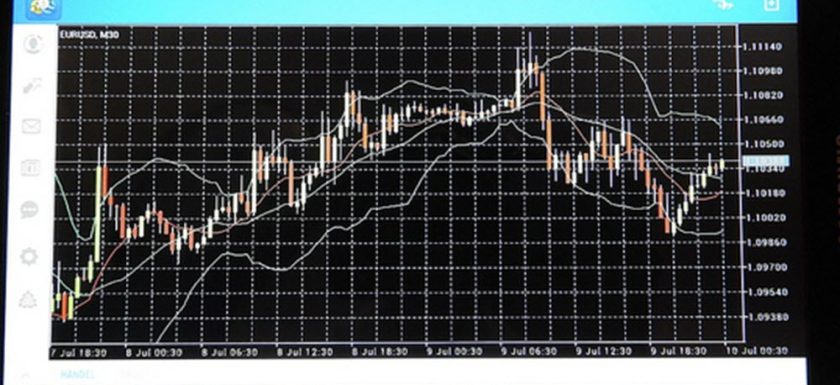One of the simplest indicators, at least in its interpretation and application, is the Parabolic SAR developed by Welles Wilder. The indicator appears directly on the price chart, and therefore provides real-time data to traders, whether trading trends or hunting for reversals. The SAR, as it is usually called, stands for stop-and-reversal. It provides entry points, exit points (if not trading binary options) and can also be used to filter out trades from other strategies.
How to Use It
After you have chosen your binary options broker, and when you apply the SAR to your chart, you’ll see a series of dots occur above or below the price bars. When the dots are above the price bars, the trend is down and you want to be short or have bought put options. When the dots are below the price bars, the trend is up and you want to be long or have bought call options. You can use this method to filter trades based on other strategies. For example, if another strategy gives you a buy/call signal, and the SAR is below the price, both signals confirm each other and the trade should be taken. But if the SAR is above the price bars, indicating a downtrend, and you get a long/call signal from another strategy, you may want to rethink taking the trade.
The SAR can provide its own entry signals as well. When the dots move from below the price bars to above, enter short or buy puts because the uptrend has likely ended and a downtrend has begun. If the dots move from above the price bars to below, enter long or buy calls as the downtrend is likely over and an uptrend is underway.
Examples
Figure 1. SAR applied to Daily EUR/USD
The SAR works on any timeframe, from tick charts up to monthly or weekly charts. Figure 1 shows the EUR/USD with a standard (0.02, 0.20, discussed in the next section) Parabolic SAR applied to it.
Over this period the SAR captures the major moves nicely. The SAR is above the price bars in late December through early January, indicating a downtrend or pullback. The dots then move below the price bars in early January, signaling a trend change and an opportunity to go long/buy calls. In early February, another trend change occurs, indicating a move to the downside is underway.
Figure 2. SAR False Signals
Unfortunately, the SAR is not a perfect indicator. In Figure 2, the indicator does a good job of catching most of the decline from late February to late March, but a few false buy signals occur along the way. Had you bought on these reversal signals–marked with white arrows–and not got out quickly, you’d have lost money. The indicator did do a good job of signaling the downtrend was back underway though, hopefully getting you short or into a put position allowing you to recoup some losses.
Inner Workings
When the trend is up, the dots will move up along the underside of the price bars. Regardless of whether the price drops or rises over the time period of the bar, the dots will rise. When the dots are above the price, the dots will drop regardless of what each bar does. When the dots flip from bottom to top, or from on top to the bottom, it signals the former trade has ended.
The SAR moves in this way because it is intended to confirm price direction, and signal exits (stop-and-reverse). Time is the enemy of a trader, especially an options trader, so SAR moves in such a way that it captures the bulk of the trend, but will signal an exit/reversal at a sign of trouble.
You don’t need to know the actual calculation below, or ever have to use it. But a brief intro to it will help you choose which variables to use when you add it to your chart (see “acceleration factor” below).
Where SARn represents the current period and SARn+1 represents the next period’s SAR values.
EP , or extreme point, is the highest point reached during an uptrend, or the lowest point during a downtrend. This value is updated as the extreme point changes.
α is an acceleration factor, and when you add the indicator to your chart you’ll need to choose a value for this. Usually it is set to 0.02. Essentially this means that each time a new EP is observed, the acceleration factor will go up, quickening to the point where the SAR converges on the price.
You can also choose a maximum acceleration value. This will cap how fast the SAR can accelerate up or down. Generally this is set to 0.20.
Figure 3. Parabolic SAR Parameters
Final Word
No indicator is flawless, and the Parabolic SAR is no exception. It can provide false signals resulting in losses, it may filter out trades which would have been profitable or it may confirm trades which end up being losers. After looking through some examples and getting a feel for the indicator, play around with it to see how it works for you and the markets you trade. Always practice and develop a complete trading plan before utilizing a Parabolic SAR strategy with real money. While it isn’t perfect, it is a one a valuable indicator, and can be implemented easily with most charting platforms.
This article was last updated on: August 8, 2023
